How Banks Power Works – It’s all about Airflow
With your engine starved for air, a tremendous amount of power traveling through the power-train is unnecessarily wasted before it gets to where it matters—your vehicle’s rear wheels.
In the confines of a stock motorhome or truck, your gas or diesel engine’s inherent power is limited by factory restrictions in the intake and exhaust. With your engine starved for air, a tremendous amount of power traveling through the power-train is unnecessarily wasted before it gets to where it matters—your vehicle’s rear wheels. Airflow restrictions make poor engine efficiency, which soaks up fuel, runs a hot exhaust, compromises performance and shortens engine life.
How airflow restrictions waste power
- Intake restrictions cause engine to labor (“pumping losses”)
- Exhaust backpressure generates a tremendous engine heat-load
- Power is robbed from the crankshaft to expel exhaust
- Cooling fan runs often, wasting power and making the cab noisy
- Hot, overworked lubricants degrade faster and increase friction
- Gasoline-vehicle makers mask poor-airflow problems (eg. detonation) with overly-rich fuel
- Excess fuel is wasted, worsening mileage and emissions
- Inadequate airflow chokes engine’s potential
Think of an engine as an air pump that produces power. To run it, fuel is needed. In a typical stock vehicle, a gasoline engine produces only about 250 horsepower for every 1,000-horsepower’s worth of fuel put in. Diesel engines are more efficient—they put out about 320 horsepower for every 1000 in, only wasting 68%—still leaving lots of room for improvement!
Air Intake Solutions Found in Banks Power Systems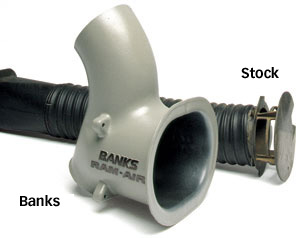 Banks Super-Scoop® inlet |
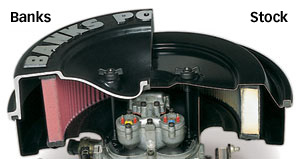 Banks Ram-Air™ Intakes Banks Ram-Air™ IntakesThis cutaway compares the height of Banks’ cast Hi-Rise air-filter cover to the stock lid—its sloping top and greater volume direct more cool, dense air into the engine. Also included is Banks’ larger, free-breathing Ram-Air filter, which outflows any competitor and lasts a lifetime. |
 Twinram™ Intake Manifold Twinram™ Intake ManifoldBanks exchanges the factory manifold in Cummins B 12-valve applications with the TwinRam, which doubles the inlet area and optimizes air distribution into the cylinder head to direct boosted air more equally into all six cylinders. By balancing cylinder-air volume and temperatures, Banks yields a smoother output. TwinRam amps up the power rating, improves fuel economy and durability, and reduces emissions. |
Exhaust Flow Solutions Found in Banks Power Systems
|
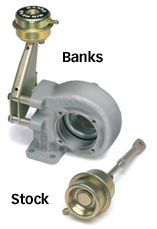 Quick-Turbo® with BigHead™ Wastegate Actuator Quick-Turbo® with BigHead™ Wastegate ActuatorDrawing on their experience with high-performance turbo systems, Banks designed a quicker, ultra-efficient turbine housing that improves diesel airflow, knocks out turbine choke and provides a sharp throttle response. Quick-Turbo builds low-end torque and raises boost peak by as much as 66%. Banks BigHead has twice the diaphragm area of any other wastegate actuator, and its higher spring pressure keeps the valve seated longer, so there’s no “wastegate blow-open” to compromise power. BigHead marches to peak boost sooner, maintains maximum usable boost without over-boosting, and produces more mid-range torque. |
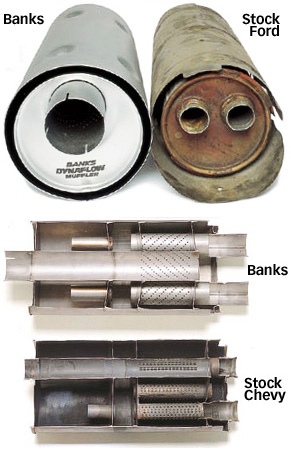 Dynaflow® Muffler Dynaflow® MufflerIn this example, the stock muffler’s 1-3/4″ dual outlets combine to form a puny 4.80 sq. in. internal flow area. The massive 3-1/2″ outlet on Banks’ stainless Dynaflow muffler provides an 8.95 sq. in. area that greatly reduces backpressure.Instead of the small, torturous chambers the factory uses to inhibit flow and control noise, the large acoustic chambers in Banks Dynaflow are resonance-tuned to damp out annoying tones without excessive restriction, producing an exhaust sound that is authoritative, yet civilized. |
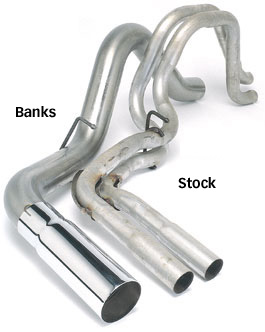  Monster® Exhaust Monster® ExhaustBanks forms huge constant-diameter (3-1/2″ or 4″) exhaust components that help slash backpressure, commonly 75% to 90%. In this example, the internal flow area of Banks’ 3-1/2″ single tailpipe is 86% larger than both stock pipes combined. Banks utilizes heavy-gauge stainless steel and adds a polished stainless tailpipe tip for a handsome finishing touch. |
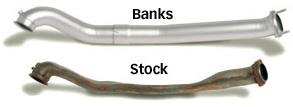 Monster® T.O.P. Monster® T.O.P.Banks replaces the crushed factory turbine outlet pipe with a mandrel-formed, stainless Monster that flows 26% better and protects diesel durability by keeping the turbine outlet EGT safely below 1050° F. Includes integral stainless-clad ceramic matrix heat shield (not shown) and pyrometer probe fitting. |

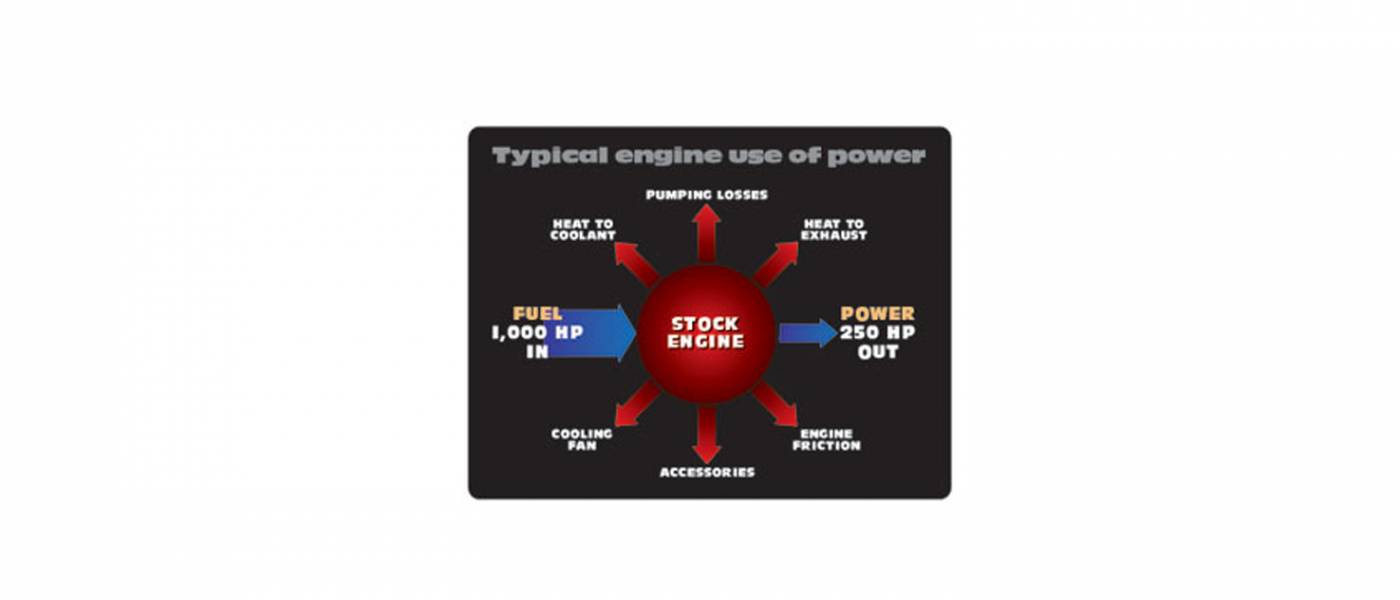
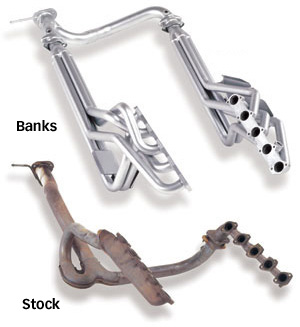 TorqueTube® Exhaust Manifolds
TorqueTube® Exhaust Manifolds